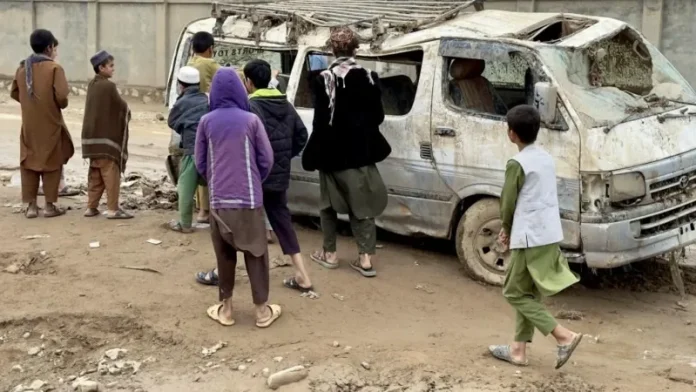In northern Afghanistan, a terrible tragedy has struck as flash flooding wreaked havoc, leaving hundreds feared dead. The situation is dire, with warnings that the death toll could climb higher as more storms hit the region.
According to Taliban officials, at least 150 people have been reported dead, while the World Food Programme fears the toll could be over 300. The heavy rainfall hit five districts in Baghlan province on Friday night, causing chaos and devastation.
Social media images depict torrents of water engulfing houses in multiple villages, leaving behind a path of destruction. The region has been experiencing unusually heavy rainfall over the past few weeks, resulting in floods that have claimed numerous lives since mid-April.
Abdul Mateen Qani, a spokesperson for Afghanistan’s interior ministry, revealed that at least 131 people lost their lives in Baghlan province, with an additional 20 fatalities in Takhar. Meanwhile, Rana Deraz from the UN’s World Food Programme reported 311 deaths in Baghlan alone.
The flooding has caused extensive damage, with 2,011 homes destroyed and another 2,800 damaged. Additionally, three mosques and four schools were impacted by the disaster. The Borka district in Baghlan province suffered the most significant losses, with over 200 people trapped inside their homes.
Severe damage has also been reported in other provinces, including Badakhshan, Ghor, and western Herat. Local officials, alongside the army, are working tirelessly to search for survivors buried under the mud and rubble.
Emergency aid, including tents, blankets, and food, is being provided to affected families. However, the situation remains dire, with the main road connecting Kabul to northern Afghanistan closed due to the flooding.
This tragedy comes on the heels of flooding last month in the western part of the country, which claimed dozens of lives and left thousands in need of humanitarian assistance. Flash flooding occurs when rainfall overwhelms drainage systems, leading to widespread devastation.
Experts attribute the increased vulnerability to flooding to various factors, including a relatively dry winter that has hindered the soil’s ability to absorb rainfall. Additionally, poorly constructed homes in rural areas exacerbate the risk.
Afghanistan is among the countries most vulnerable to the effects of climate change, with extreme weather events becoming more frequent and severe. Decades of war have left the nation impoverished and ill-prepared to cope with natural disasters.
Climate change exacerbates the risk of flooding by increasing the likelihood of extreme rainfall. Without significant reductions in emissions, temperatures will continue to rise, further intensifying the impact of such disasters.
In summary, the recent flash flooding in northern Afghanistan has resulted in a devastating loss of life and widespread destruction. The situation underscores the urgent need for climate action and disaster preparedness to mitigate the impact of such events in vulnerable regions.























